Indian millets are a group of nutritiously rich, drought tolerant and mostly grown in the arid and semi-arid regions of India. They are small-seeded grasses belonging to the botanical family Poaceae. They constitute an important source of food and fodder for millions of resource-poor farmers and play a vital role in ecological and economic security of India. These millets are also known as "coarse cereals" or "cereals of the poor". Indian Millets are nutritionally superior to wheat and rice as they are rich in protein, vitamins and minerals. They are also gluten-free and have a low glycemic index, making them ideal for people with celiac disease or diabetes. India is among the top 5 exporters of millets in world. World export of millet has increased from $400 million in 2020 to $470 million in 2021 (ITC trade map) India exported millets worth $64.28 million in the year 2021-22, against $59.75 million in 2020-21. Share of Millet based value added products is negligible.
India is the largest producer as well as the largest exporter of cereal products in the world. India's export of cereals stood at Rs. 96,011.42 Crore / 12,872.64 USD Millions during the year 2021-22. Rice (including Basmati and Non-Basmati) occupy the major share in India's total cereals export with 75% (in value terms) during the same period. Whereas, other cereals including wheat represent only a 25 % share of total cereals exported from India during this period.
Benefits of Millets:
- Millets are highly adaptive to a wide range of ecological conditions and thrive well in rain-fed; arid climate and they have minimal requirement of water, fertilizers, and pesticides.
- Health-promoting nutritious crop: Compared to other cereals they have superior micronutrient profile and bioactive flavonoids.
- Millets have a low Glycaemic Index (GI) and also associated with the prevention of diabetes.
- They are good source of minerals like iron, zinc, and calcium.
- Millets are gluten-free and can be consumed by celiac disease patients.
- Millet has a beneficial effect on the management and prevention of hyperlipidemia and risk of CVD.
- Millets are found to be helpful with the reduction of weight, BMI, and high blood pressure.
- In India, Millet is generally consumed with legumes, which creates mutual supplementation of protein, increases the amino acid content, and enhances the overall digestibility of protein.
- Millet based value-added products in ready to cook, ready to eat category are easily accessible and convenient to the urban population.
- Millets are used for dual purposes as food as well as fodder, which make it more farming efficient.
- Millet cultivation helps to reduce the carbon footprint.
Indian Millet Production Scenario:
Millet is a type of grain that is popular in many parts of the world, especially in Africa and Asia. It is a staple food in many parts of the world, particularly in Africa and Asia. According to the World Food Programme, there are an estimated 1.2 billion people who consume millet as a part of their diet.
Millet production has remained relatively stable over the past few years, with an estimated production of 28 million metric tons in 2020. The majority of millet is produced in Africa, followed by Asia. India is the largest producer of millet, followed by Niger and China. Other major millet-producing countries include Burkina Faso, Mali, and Senegal.While millet is not a major food crop in the developed world, it plays a vital role in the diets of many people in developing countries. Millet is a drought-tolerant crop that can be grown in dry, arid climates where other crops would fail. It is also a nutritious grain that is high in fiber and essential minerals. For these reasons, millet will continue to be an important food crop in the years to come.
In India, millet production has been on the rise in recent years. India is one of the largest producers of millets &Indian farmers have been increasingly planting millet as a drought-resistant crop. The Indian government has also been promoting millet production as part of its National Food Security Mission. As a result of these factors, millet production in India is expected to continue to grow in the coming years. The graph below depicts the production trends of millets in India.
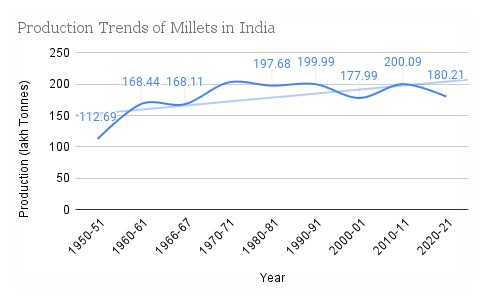
Indian Millet Sourcing Point:
India is one of the leading producers and suppliers of millet, and there are a number of millet sourcing points located throughout the country. The main millet-growing states in India are Rajasthan, Maharashtra, Karnataka, Andhra Pradesh, and Madhya Pradesh These states have a large number of millet farmers who grow the grain for both domestic and international markets. In addition to the major millet producing states, there is also a number of smaller millet producing regions located throughout India. These regions include the states of Uttar Pradesh, Bihar, and Madhya Pradesh.
| Millet |
Botanical Name |
| Pearl Millet |
Pennisetum glaucum .L. |
| Sorghum |
Sorghum bicolor |
| Finger Millet |
Eleusine coracana |
| Small Millets: |
|
| I. Foxtail Millet |
Setaria italica |
| II. Barnyard Millet |
Echinochloa frumentacea |
| III. Kodo Millet |
Paspalum scrobiculatum |
| IV. Proso Millet |
Panicum miliaceum L. |
| V. Little Millet |
Panicum sumatrense |
| Two Pseudo Millets: I.Buck wheat(Kuttu) |
Fagopyrum esculentum |
| II. Amaranthus (Chaulai) |
Amaranthus viridis |
The most extensively cultivated millet is pearl millet. Large stems, leaves, and heads characterize this summer cereal grass. Bajra is a type of millet and is one of the most cultivated crops in India. It is a short-duration crop and can be grown in both rain fed and irrigated conditions. Bajra is a rich source of proteins, minerals, and vitamins and is a good source of energy. It is also a good source of dietary fiber.
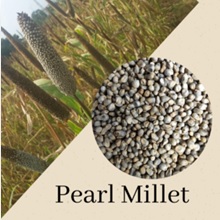 |
Pearl Millet Nutrient per 100g
| Nutrient per 100g |
| Energy (Kcal) |
361 |
| Protein |
11.6 g |
| Carbohydrate |
65.5 g |
| Crude Fibre |
1.2 g |
| Calcium |
42mg |
| Iron |
8.0 mg |
Source: Nutritive value of Indian food, NIN, ICMR 2018
|

Sorghum, also known as jowar, is a cereal grain that is grown in India.Sorghum is a crop from the Gramineae family that is high in carbohydrates and has the scientific name Sorghum bicolor L.It is a drought-tolerant crop that can be grown in areas with little or no irrigation. Sorghum is a nutritious grain that is high in fiber and protein. It is also a good source of vitamins and minerals, including iron and magnesium. Sorghum is typically used to make flour, which is used to make bread, porridge, and other food items.It is one of the staple crops for millions of semi-arid residents, it's also known as the "KING OF MILLETS".
 |
Sorghum Nutrient Per 100g
| Nutrient per 100g |
| Energy (Kcal) |
349 |
| Protein |
10.4 g |
| Carbohydrate |
72.6g |
| Crude Fibre |
1.2 g |
| Calcium |
42mg |
| Iron |
8.0 mg |
Source: Nutritive value of Indian food, NIN, ICMR 2018
|
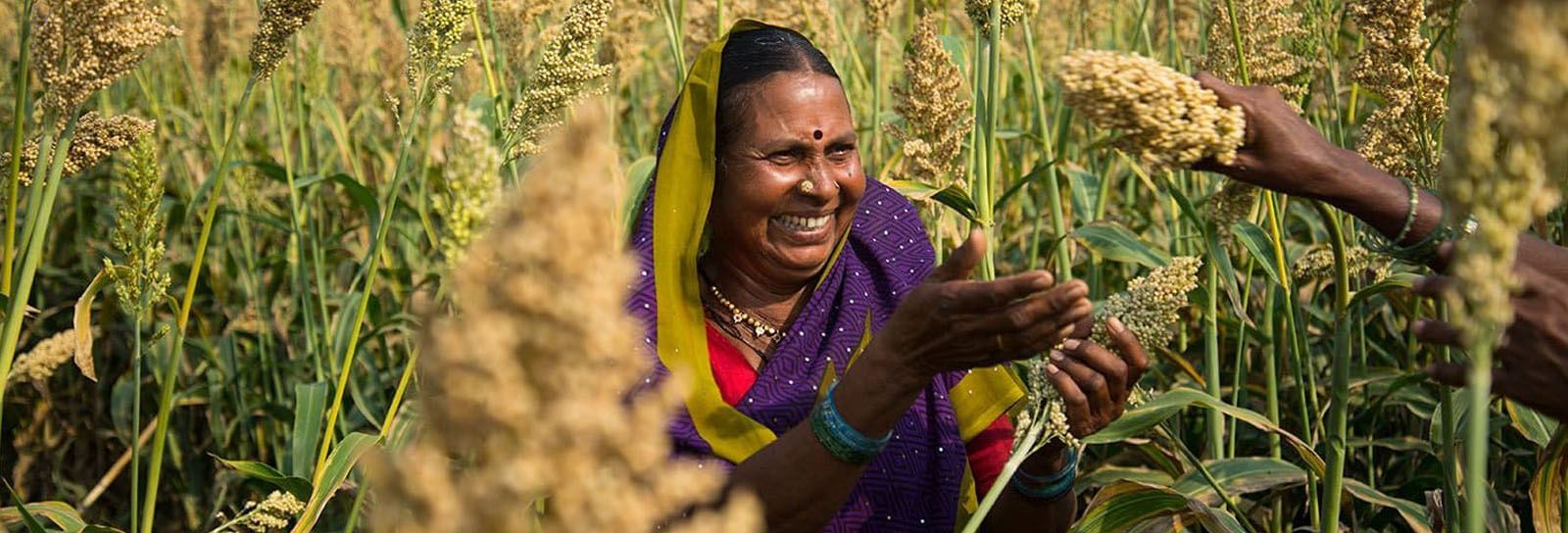
Another significant staple grain in Eastern Africa and Asia is finger millet ,often known as ragi in India (India, Nepal). At the top of the stem, the plant has many spikes or "fingers." The grains are tiny (1-2 mm in diameter). Finger millet grains are rich in minerals, dietary fibre, polyphenols, and proteins. Finger millet, which is rich in calcium, plays an important role in growing children, pregnant women as well as people suffering from obesity, diabetes, and malnutrition. It contains high amount of potassium for the proper functioning of the kidneys and brains and allows the brain and muscles to work smoothly.
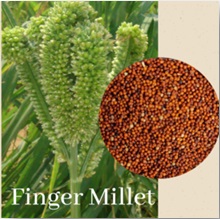 |
Finger Millet Nutrient per 100g
| Nutrient per 100g |
| Energy (Kcal) |
328 |
| Protein |
7.3 g |
| Carbohydrate |
72 g |
| Crude Fibre |
2.6 g |
| Calcium |
344 mg |
| Iron |
8.9 mg |
Source: Nutritive value of Indian food, NIN, ICMR 2018
|
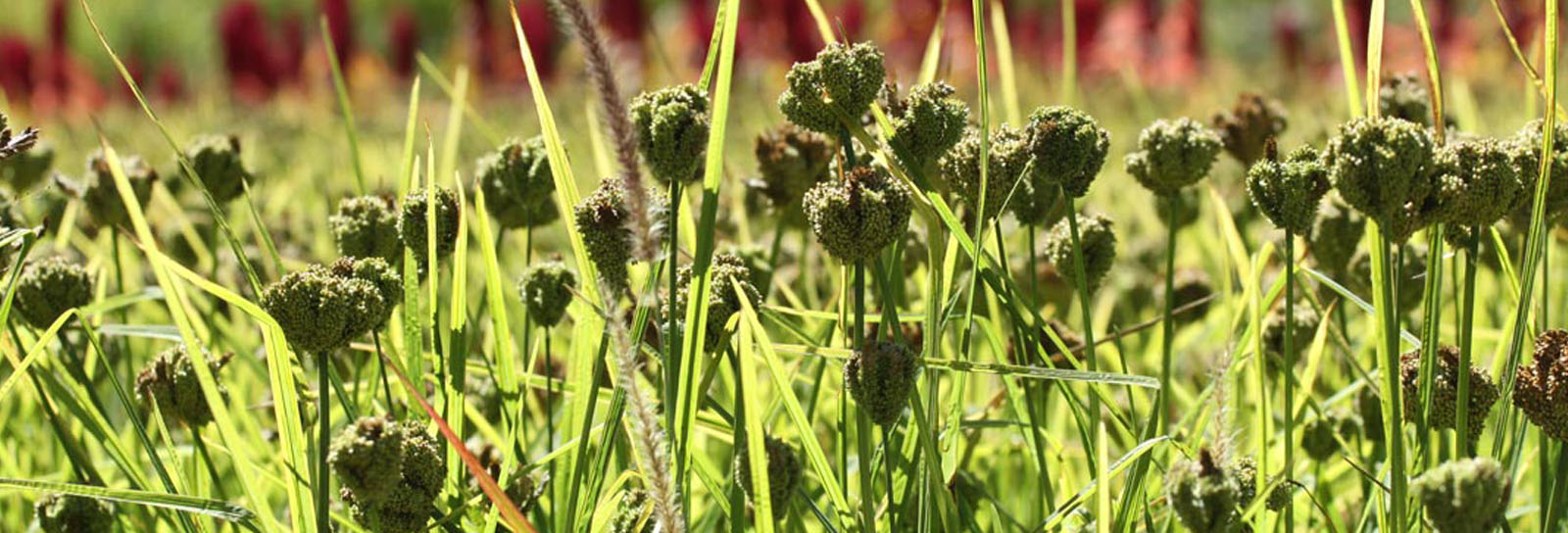
Foxtail millet is one of the solid crop that can grow in poor, dry conditions and tolerate high temperatures. It is a fast growing plant, which means it requires less than 12 hours of daylight to grow. It is rich in carbohydrates which helps in balancing the blood sugar level in the body. Iron content is high in it. Foxtail millet may also improve overall immunity, malnutrition. It contains high amount of potassium for the proper functioning of the kidneys and brains and allows the brain and muscles to work smoothly.
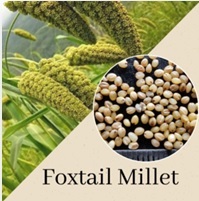 |
Foxtail Millet Nutrient per 100g
| Nutrient per 100g |
| Energy (Kcal) |
331 |
| Protein |
12.30 g |
| Carbohydrate |
60.9 g |
| Crude Fibre |
14.0 mg |
| Calcium |
31 mg |
| Iron |
3.6 mg |
Source: Nutritive value of Indian food, NIN, ICMR 2018
|

Barnyard Millet is popular in millets name list and also known as Sanwa. It is stacked with high amounts of dietary fibres that help improve bowel movement and aiding weight loss. It is rich in calcium and phosphorus, which can strengthen bone density. Barnyards are generally utilized as food for humans and as animal feed.
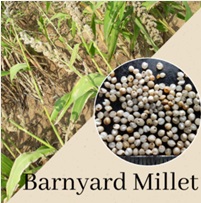 |
Barnyard Millet Nutrient per 100g
| Nutrient per 100g |
| Energy (Kcal) |
341 |
| Protein |
7.7 g |
| Carbohydrate |
67.0g |
| Crude Fibre |
7.6mg |
| Calcium |
17mg |
| Iron |
9.3mg |
Source: Nutritive value of Indian food, NIN, ICMR 2018
|
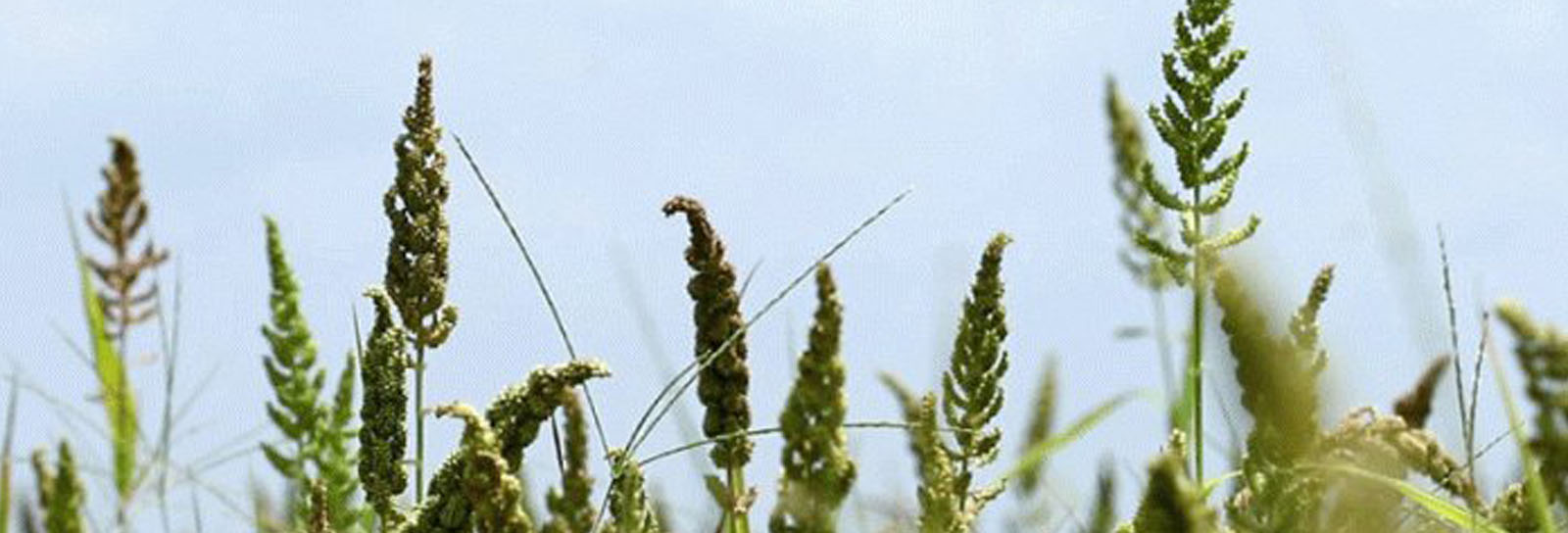
Kodo Millet, also known as Kodon Millet, is a digestible variant with higher amounts of lecithin amino acid. It has a significant effect on strengthening the nervous system. Kodo is a fantastic source of B vitamins, especially niacin, B6, and folic acid, among other vitamins and minerals. It contains calcium, iron, potassium, magnesium, and zinc minerals. Being a gluten-free millet, it is great for gluten-intolerant individuals. It can relieve cardiovascular disorders such as high blood pressure and cholesterol levels when eaten regularly by postmenopausal women.
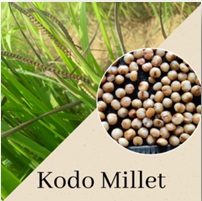 |
Kodo Millet Nutrient per 100g
| Nutrient per 100g |
| Energy (Kcal) |
302 |
| Protein |
8.03 g |
| Carbohydrate |
69.9 g |
| Crude Fibre |
8.5 mg |
| Calcium |
22.0mg |
| Iron |
9.9mg |
Source: Nutritive value of Indian food, NIN, ICMR 2018
|
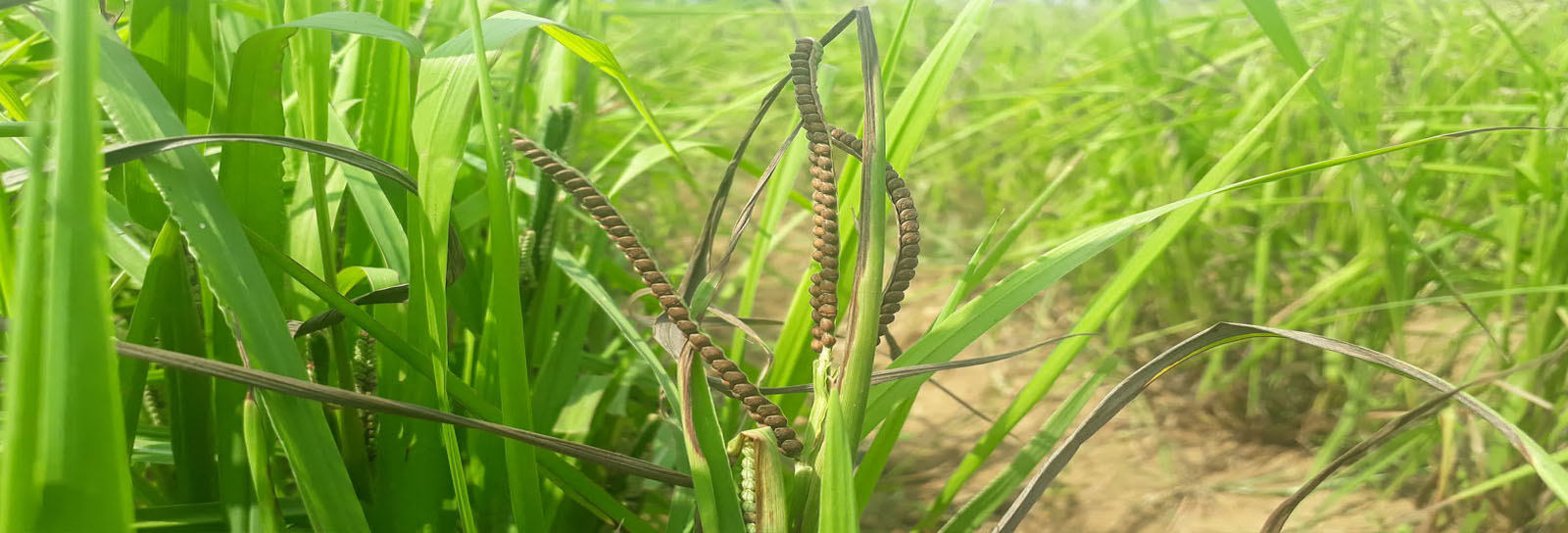
Proso millet is rich in minerals, dietary fiber, polyphenols, vitamins and proteins. It is gluten-free and therefore, ideal for the gluten intolerant people. Proso millet contains high lecithin which supports the neural health system. It is rich in vitamins (niacin, B-complex vitamins, folic acid), minerals (P, Ca, Zn, Fe) and essential amino acids (methionine and cysteine).
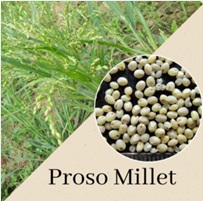 |
Proso Millet Nutrient per 100g
| Nutrient per 100g |
| Energy (Kcal) |
309 |
| Protein |
8.30g |
| Carbohydrate |
65.90g |
| Crude Fibre |
9.00mg |
| Calcium |
27.00mg |
| Iron |
0.50mg |
Source: Nutritive value of Indian food, NIN, ICMR 2018
|
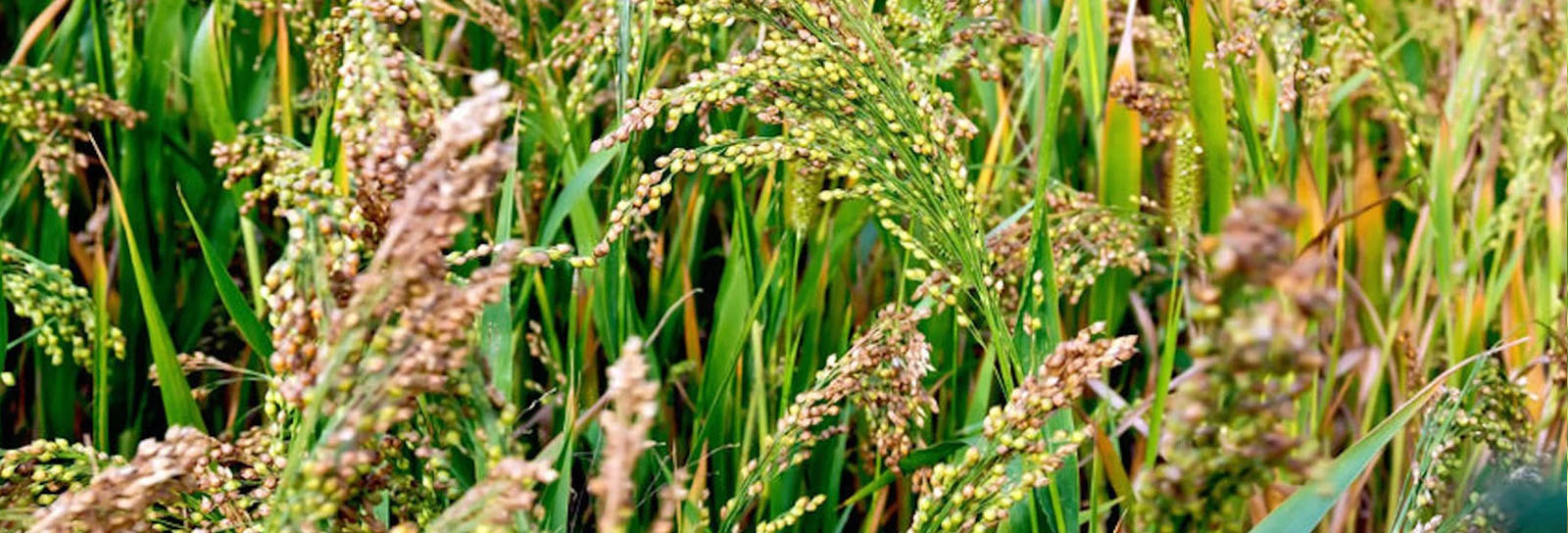
Little Millet (Panicummiliare) is grown throughout India and is a traditional crop. It is a relative of proso millet but the seeds of little millet are much smaller than proso millet. it is also called Moraiyo, Kutki, Shavan, and Sama. It is loaded with vitamin B and essential minerals such as Calcium, Iron, Zinc, and Potassium. Little Millet is largely used in Southern states of India in numerous traditional dishes. It is a healthier alternative to rice and does not cause weight gain.
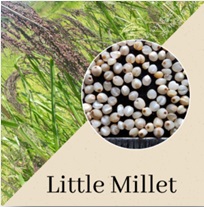 |
Little Millet Nutrient per 100g
| Nutrient per 100g |
| Energy (Kcal) |
314 |
| Protein |
10.13g |
| Carbohydrate |
65.55g |
| Crude Fibre |
7.72mg |
| Calcium |
32.00mg |
| Iron |
1.30mg |
Source: Nutritive value of Indian food, NIN, ICMR 2018
|

|
|
